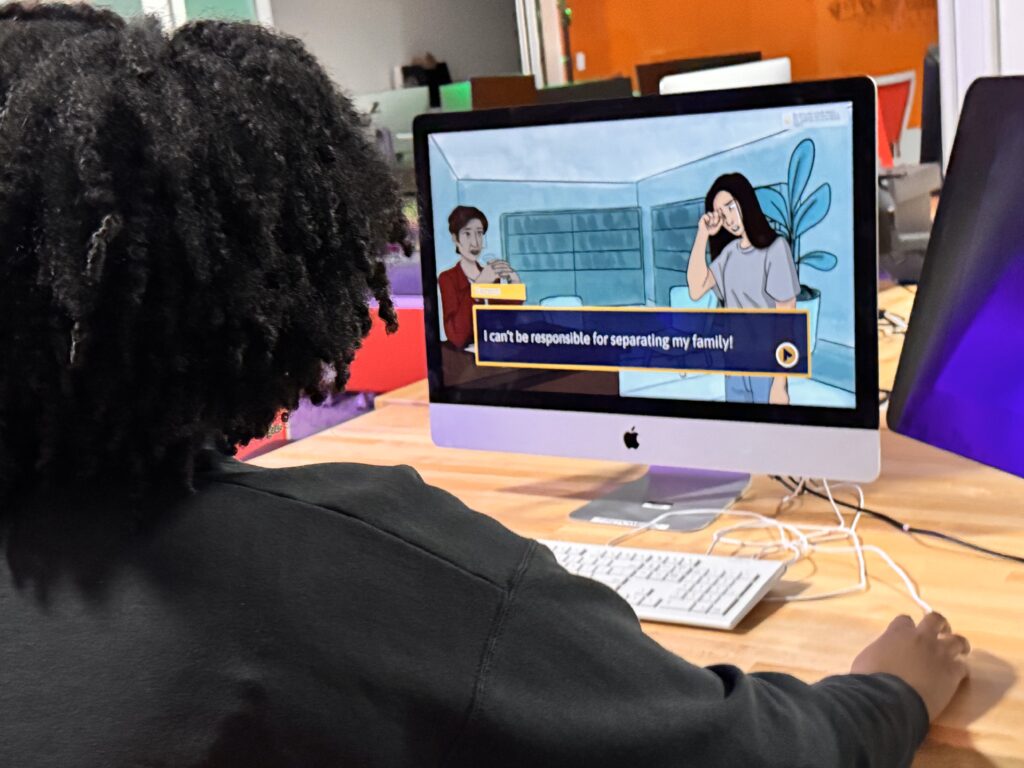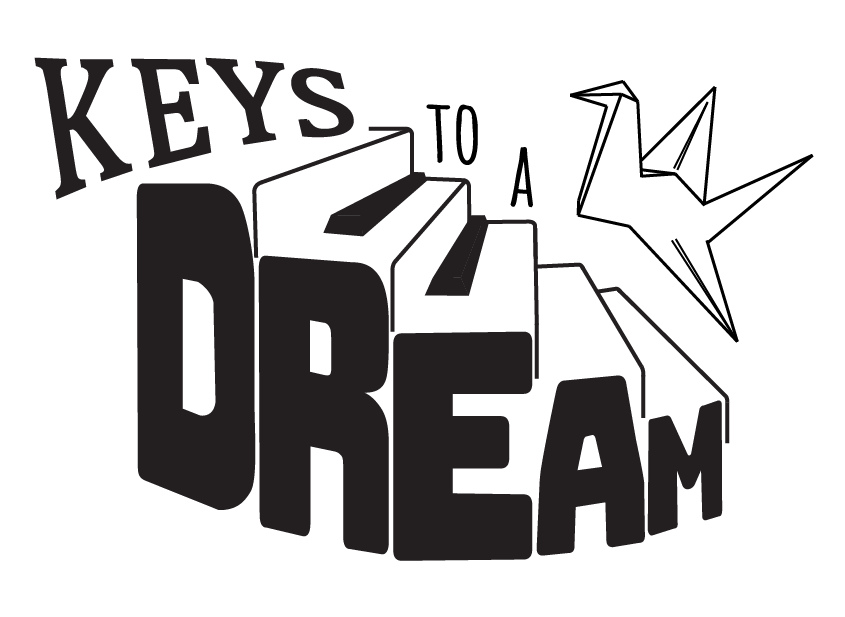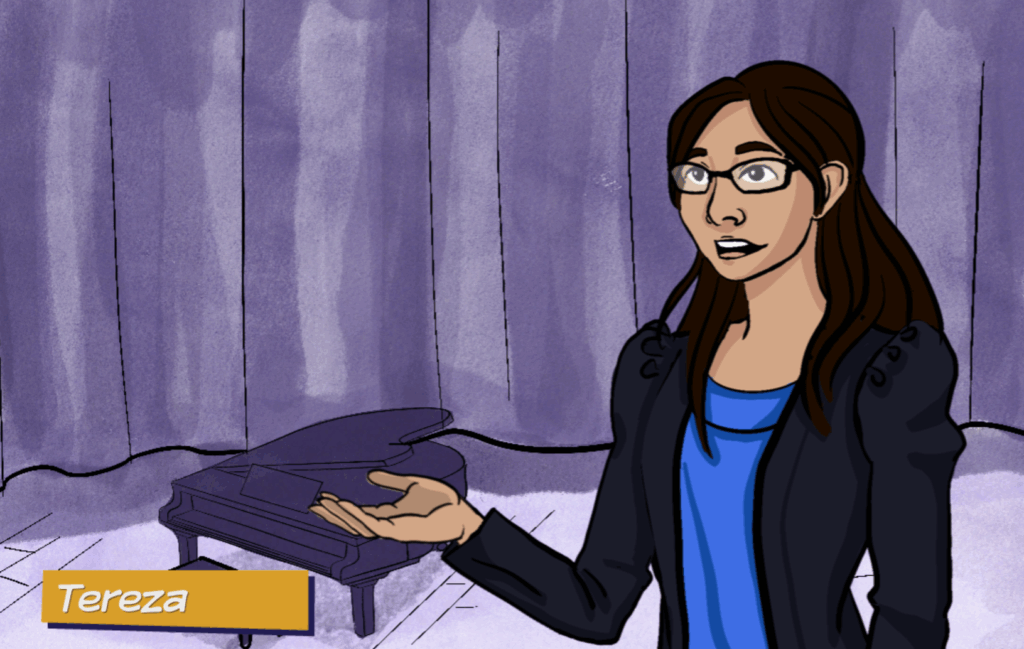Keys to a DREAM
Keys to a DREAM is an immersive, narrative-driven game that shines a light on the fight for immigrant rights and the DREAM Act. Players step into the shoes of Tereza Lee, the first DREAMer, sharing her experiences of hope, struggle, and resilience, as well as challenges faced by her and countless undocumented youth. This journey invites learners to rethink what it means to be American while inspiring empathy, courage, and activism.
Keys to a DREAM is still in development with an official release planned for early 2026 (by the 25th anniversary of the first DREAM Act proposal).

About the game
In this visual novel, players hear from Tereza Lee, D.M.A., both as a pianist “whose touch is exceptionally clear” (Chicago Sun-Times) and as an activist advocating for immigration reform for over two decades. Players first hear an impressive piano performance – a recording of Tereza Lee herself playing Chopin’s Fantaisie-Impromptu in C-Sharp Minor, Op. 66 – followed by her inspiring story as an immigrant student with a dream to study music and her biggest supporter, Ann Monaco, then director of the Merit School of Music in Chicago.
Special thanks to Dr. Tereza Lee for her support and feedback – and even her piano performance – but especially her trust in helping to tell ‘herstory’ of Asian American student activism and tireless advocacy for immigration reform for more than two decades.

Keys to a DREAM is still in development. We welcome you to playtest the latest version and share any feedback (bugs or otherwise) with Lien.Tran[at]depaul.edu.
Project Background

Today, Tereza is an accomplished music educator and activist in New York City. Back in 2000, she was an extremely talented Asian American high school student in Chicago. She dreamed of attending college to study piano but feared that she wouldn’t be able to attend. The reason for this fear is what eventually led to Tereza inspiring the Development, Relief, and Education for Alien Minors (DREAM) Act and became the original ‘Dreamer’.
This project teaches critical and underrepresented Asian/American history through immersive and interactive storytelling. It can easily be used in informal as well as formal education settings such as social studies, civics, U.S. history, U.S. Government, and Asian American studies. The project was inspired by Illinois’ Teaching Equitable Asian American Community History (TEAACH) Act which amended Illinois School Code in 2021 and ensuring that every public elementary and high school student in Illinois learns about the contributions of Asian Americans to the economic, cultural, social, and political development of the United States.
Educational Uses

Keys to a DREAM provides secondary school and college students the opportunity to learn about the context and circumstances for a pivotal moment in U.S. history, which led to the introduction of the bipartisan DREAM Act, and encourages them to seek out diverse stories from generations of resilient immigrant students.
This learning experience will also provide them with the opportunity to think more critically about what it means to ‘be American’ – who they themselves consider to ‘be American’ and gain empathy for immigrants and undocumented Americans.
By centering the real-life story of Tereza Lee and other DREAMers, the game brings historical events to life and invites students to explore the emotional and civic implications of immigration policy. It can complement lessons on the DREAM Act, DACA, and immigrant rights, and be integrated into classroom units on U.S. government, social studies, or Asian American history to foster empathy, civic awareness, and deeper historical understanding. After playing, learners may understand: what, how, and why the DREAM Act was introduced; the significant role it could have played in shaping the lives of undocumented youth in the U.S.; and why it has yet to be passed almost 25 years after its introduction.
Development, Relief, and Education for Alien Minors (DREAM) Act
The first version of the Development, Relief, and Education for Alien Minors (DREAM) Act was introduced in 2001. In part because of the publicity around that bill, young undocumented immigrants have been referred to as “Dreamers.” Over the past 20 years, at least 20 versions of the Dream Act have been introduced in Congress. While the various versions of the bill have contained some key differences, they all would have provided a pathway to legal status for undocumented people who came to this country as children.
Some versions of the Dream Act have garnered as many as 48 cosponsors in the U.S. Senate and 205 in the House of Representatives. However, despite bipartisan support for each iteration of the bill, none have become law. To date, the 2010 bill came closest to full passage when it passed the House but fell just five votes short of the 60 needed to proceed in the Senate.
For more information on the DREAM Act, please visit the American Immigration Council website.
Project Team
Lien B. Tran – producer, director, lead game designer
Tereza Lee – protagonist, pianist, herstory subject matter expert

Tereza Lee graciously recorded herself playing the piano for this project. Please enjoy listening to her exceptionally clear touch.
Thank you DePaul University students for their essential contributions to this project.
- Homa Alai* and Samantha Fuentes* – 2D art
- Kai Hakomori* and Bradley Estacio* – game development
- Jesvin John* – UX design and research
- Miles Hutto, sound composition
- Aech Ashe, Kavin Tharanee, and Ananth Thiruthuvadoss – sound design
- HyeSeung Lee* – logo design
* Research assistant, Jarvis College of Computing and Digital Media, DePaul University
Special thanks to NERDLab Miami for making and providing their Answer Campus conversation template, which allowed us to rapidly build this project in Unity and, in turn, allowed for Tereza Lee and her story to be part of the growing “Answerverse”.
